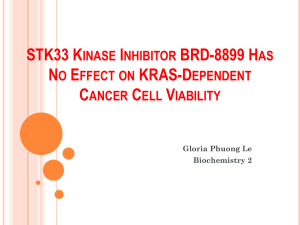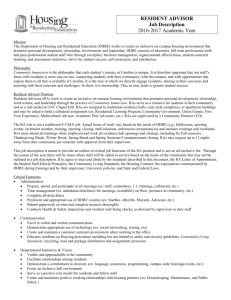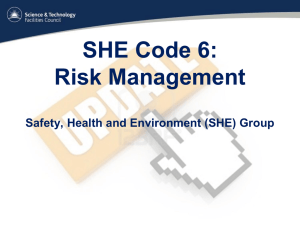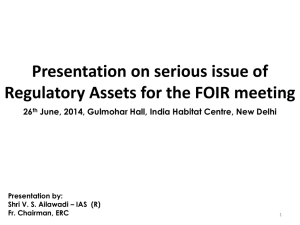Title: A Prediction Model for Renal Artery Stenosis Using Carotid
advertisement
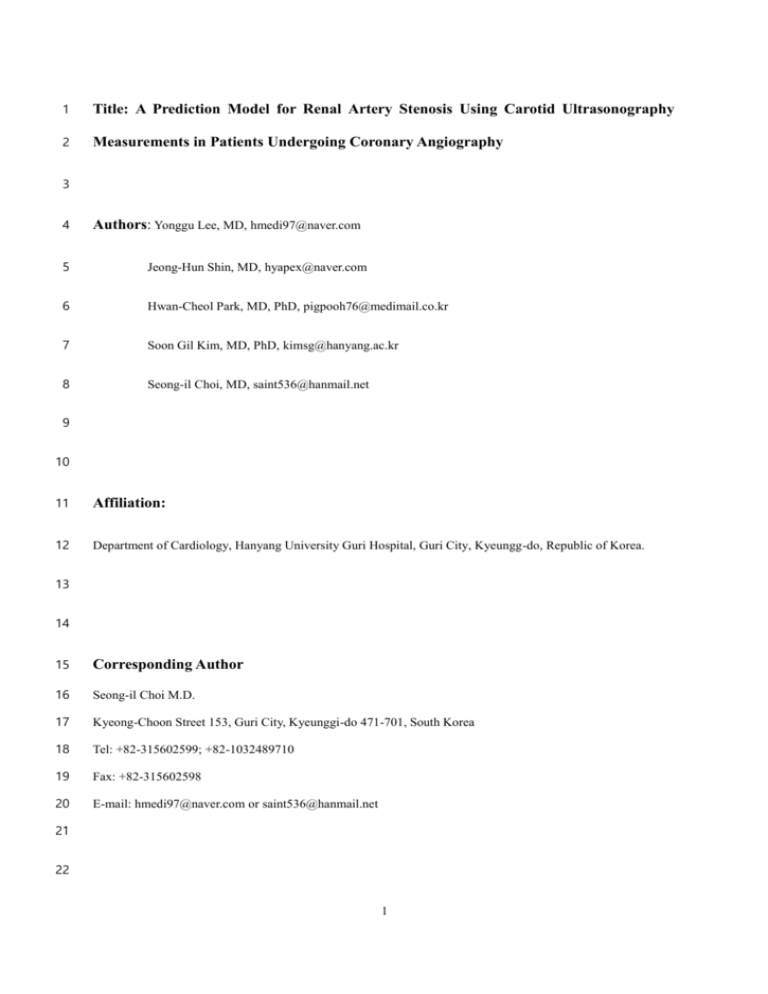
1 Title: A Prediction Model for Renal Artery Stenosis Using Carotid Ultrasonography 2 Measurements in Patients Undergoing Coronary Angiography 3 4 Authors: Yonggu Lee, MD, hmedi97@naver.com 5 Jeong-Hun Shin, MD, hyapex@naver.com 6 Hwan-Cheol Park, MD, PhD, pigpooh76@medimail.co.kr 7 Soon Gil Kim, MD, PhD, kimsg@hanyang.ac.kr 8 Seong-il Choi, MD, saint536@hanmail.net 9 10 11 Affiliation: 12 Department of Cardiology, Hanyang University Guri Hospital, Guri City, Kyeungg-do, Republic of Korea. 13 14 15 Corresponding Author 16 Seong-il Choi M.D. 17 Kyeong-Choon Street 153, Guri City, Kyeunggi-do 471-701, South Korea 18 Tel: +82-315602599; +82-1032489710 19 Fax: +82-315602598 20 E-mail: hmedi97@naver.com or saint536@hanmail.net 21 22 1 23 Abstract 24 Background: Carotid intima-media thickness (CIMT) and carotid atherosclerotic plaque (CAP) are well-known 25 indicators of atherosclerosis. However, few studies have reported the value of CIMT and CAP for predicting 26 renal artery stenosis (RAS). We investigated the predictive value of CIMT and CAP for RAS and propose a 27 model for predicting significant RAS in patients undergoing coronary angiography (CAG). 28 Methods: Consecutive patients who underwent renal angiography at the time of CAG in a single center in 2011 29 were included. RAS ≥50% was considered significant. Multiple logistic regression analysis with step-down 30 variable selection method was used to select the best model for predicting significant RAS and bootstrap 31 resampling was used to validate the best model. A scoring system for predicting significant RAS was developed 32 by adding the closest integers proportional to the coefficients of the regression formula. 33 Results: Significant RAS was observed in 60 of 641 patients (9.6%) who underwent CAG. Hypertension, 34 diabetes, significant coronary artery disease (CAD) and chronic kidney disease (CKD) stage ≥3 were more 35 prevalent in patients with significant RAS. Mean age, CIMT and number of anti-hypertensive medications 36 (AHM) were higher and body mass index (BMI) and total cholesterol level were lower in patients with 37 significant RAS. Multiple logistic regression analysis identified significant CAD (odds ratio (OR) 5.6), 38 unilateral CAP (OR 2.6), bilateral CAP (OR 4.9), CKD stage ≥3 (OR 4.8), four or more AHM (OR 4.8), CIMT 39 (OR 2.3), age ≥67 years (OR 2.3) and BMI <22kg/m2 (OR 2.4) as independent predictors of significant RAS. 40 The scoring system for predicting significant RAS, which included these predictors, had a sensitivity of 83.3% 41 and specificity of 81.6%. The predicted frequency of the scoring system agreed well with the observed 42 frequency of significant RAS (coefficient of determination r2 = 0.957). 43 Conclusions: CIMT and CAP are independent predictors of significant RAS. The proposed scoring system, 44 which includes CIMT and CAP, may be useful for predicting significant RAS in patients undergoing CAG. 45 46 Keywords: Renal artery stenosis, Coronary artery disease, Carotid atherosclerotic plaque, Carotid intima-media 47 thickness, Prediction model 48 2 49 Background 50 Renal artery stenosis (RAS) increases the risk of mortality in patients with cardiovascular disease. RAS is 51 associated with the prevalence and severity of coronary artery disease (CAD) [1-3], and is a correctable cause of 52 severe hypertension and ischemic nephropathy [4]. However, RAS remains under-recognized, because most 53 patients with RAS have no symptoms or signs. RAS is more prevalent in patients undergoing coronary 54 angiography (CAG) than in the general population [5]. Performing renal angiography at the time of CAG can be 55 a safe, cost-effective diagnostic strategy in patients at high risk of significant RAS [6]. However, routine 56 evaluation for RAS in asymptomatic patients undergoing CAG is difficult to justify, because of the lack of 57 evidence for clinical benefits associated with renal artery intervention in patients with RAS. An adversary from 58 American Heart Association for renal angiography at the time of CAG focuses on occasional cases with 59 symptoms or clues suggesting RAS [6]. The indications for investigation for RAS at the time of CAG in 60 asymptomatic patients have not been established. 61 Carotid intima-media thickness (CIMT) and carotid atherosclerotic plaque (CAP) are well-known indicators of 62 systemic atherosclerosis [7, 8]. Although several studies have proposed models for predicting significant RAS 63 using clinical parameters such as CAD, age, peripheral artery disease (PAD), and kidney function in patients 64 undergoing CAG [9-11], no studies have reported the value of ultrasonography measurements of CIMT or CAP 65 for predicting RAS. The aims of this study were to determine whether CIMT and CAP can predict RAS, and to 66 propose a prediction model for RAS using these carotid ultrasonography measurements in patients undergoing 67 CAG. 68 69 Subjects and methods 70 Study subjects and baseline data collection 71 From January to December 2011, consecutive patients undergoing elective CAG at Hanyang University Guri 72 Hospital were prospectively included in this study. Patients with end-stage renal disease, patients undergoing 73 emergency percutaneous coronary intervention (PCI), and patients with a history of renal artery intervention 74 were excluded. Written informed consent was obtained from all patients at the time of enrollment in the study. 3 75 All patients underwent simultaneous coronary and renal angiography. They also completed physical 76 examinations including measurement of blood pressure, body weight and height, and laboratory tests including 77 serum creatinine level, lipid profiles, hemoglobin A1c level and urinalysis. Body mass index (BMI) was 78 calculated as (weight)/(height)2 (kg/m2). Proteinuria was defined as a random urine protein/creatinine ratio of 79 >300 mg/g. The estimated glomerular filtration rate (eGFR) was calculated using the Modification of Diet in 80 Renal Diseases equation. The classification of chronic kidney disease (CKD) stages stated in Kidney Disease 81 Outcomes Quality Initiative guidelines was used to define renal function impairment [12]. Carotid 82 ultrasonography was performed to measure CIMT and CAP. The institutional review board of Hanyang 83 University Guri Hospital approved the study design and procedures. 84 Carotid ultrasonography measurements 85 CIMT was measured from the lower arterial wall on longitudinal views of each distal common carotid artery 86 during end-systole. The measurement of CIMT was achieved using automated software (Philips Healthcare, 87 Andover, MA, USA). The average value of the right- and left-sided CIMTs was used for analysis. CAP was 88 defined as the presence of an area with a ≥50% increase in the intima-media thickness compared to that of the 89 neighboring vessel wall. CAP was sought and identified in both common carotid arteries on transverse views, 90 and was measured on longitudinal views. 91 Coronary and renal angiography 92 The standard approach for CAG in the hospital where this study was performed is femoral, and right radial 93 approach is used in a minority of patients if the femoral approach is not available or the patients specially 94 request the radial approach. The femoral artery approach was used for both the coronary and simultaneous renal 95 angiography in this study. 5-Fr Judkins left and right diagnostic catheters (Cordis, Bridgewater, NJ, USA) were 96 used for left and right coronary angiography, respectively. Renal angiography was performed using a 5-Fr 97 Judkins right diagnostic catheter engaged in or directed to the renal artery ostium, with contrast medium flowing 98 back from the renal artery. Both renal arteries were visualized in anterior-posterior projections. The degree of 99 stenosis was measured using quantitative coronary angiography software (Siemens, Philadelphia, PA, USA). 100 Significant CAD was defined as stenosis ≥70% in at least one coronary artery. Significant RAS was defined as 101 stenosis ≥50% in at least one side. 4 102 Statistical analysis 103 The subjects were divided into two groups according to the presence or absence of significant RAS. The 104 student’s t test was used to compare continuous variables such as age, BMI, total cholesterol level and eGFR 105 between the two groups. Variables with skewed distributions such as triglyceride level, high density lipoprotein 106 (HDL) cholesterol level and CIMT were compared using Mann-Whitney U test. The χ2 test was used to compare 107 binary variables such as hypertension, gender, diabetes, smoking, significant CAD, presence of CAP and CKD 108 stage ≥3. 109 The model for predicting significant RAS was developed as following; the best-fit model predicting for 110 significant RAS was determined using stepwise multiple logistic regression analysis, the model was validated to 111 identify the degrees of optimism and variance, and finally, a scoring system for predicting significant RAS was 112 developed using the coefficients from the regression formula of the best-fit model. 113 In order to find the best-fit model, we transformed the continuous variables into binary variables using the 114 Youden index-J of the receiver operating characteristic (ROC) curve to maximize their discriminative powers of 115 the best-fit model.(e.g., age ≥67 years, BMI <22kg/m2). Although dichotomization of continuous variables may 116 cause bias and weaken the discriminative power of the model, we used this method because a model using 117 binary or categorical variables would be more accessible than a model using continuous variables. The extent of 118 CAP was defined as a 3-categoriy variable (none, unilateral, bilateral).. Then, multiple logistic regression 119 analysis was performed with all binary variables available and the extent of CAP as a categorical variable, to 120 reduce biases in variable selection. Backward variable selection using Wald statistics was performed to identify 121 significant variables and reduce the best-fit model to acceptable events per variable [13]... The exclusion 122 criterion for the backward selection process was set at p ≥ 0.10, to avoid excluding modestly significant 123 variables. 124 Next, validation and calibration of the best-fit model were performed using bootstrapping methods. Bootstrap 125 re-sampling is an effective technique for internal validation and calibration of a prediction model [14]. 126 Validation using bootstrap re-sampling would estimate the likely performance of the model on a new sample of 127 patients from a same clinical setting. Calibration would measure the degree of error between the predictive 128 probability and observed probability of the model. The validation was performed with 1,000 re-samples drawn 129 using the 0.632 bootstrap technique [15]. We programed the statistical software to calculate new optimal cut-off 5 130 points for continuous variables, generate binary variables using the new cut-off values in each bootstrap sample 131 and run a multiple logistic regression analysis using the backward selection method with all the new binary 132 variables. Bootstrap models were built from each bootstrap sample. The estimate of optimism in the best-fit 133 model was calculated from the following formula: 134 O= M 1 n n × ∑(Coriginal sample − Cboostrap sample ) M n=1 135 Where O is the estimate of optimism, Coriginal sample is the area under the curve (AUC) of the ROC curve of the 136 bootstrap model in the original data, Cbootstrap sample is the AUC of the ROC curve of the bootstrap model in each 137 bootstrap sample and M is the number of bootstrap samples. 138 139 Finally, using the best-fit model, we developed a risk scoring system for predicting significant RAS. Using the following formula for logistic regression analysis of the best-fit model: P 140 ln (1−P) = α + β1 X1 +β2 X2 + β3 X3 … + βn Xn (when coefficient β1<β2<β3<…<βn) 141 we assigned the integer closest to βn/β1 as the score for the variable Xn. Then, we summated the integers to 142 generate a risk score for predicting significant RAS in each patient, if variable Xn was present in the patient. 143 ROC curve analysis was performed to evaluate the discriminative power and optimal cut-off point of the scores 144 for predicting significant RAS. The goodness-of-fit of the risk scoring system for significant RAS was assessed 145 using the Hosmer-Lemeshow test and Levenburg-Marquardt nonlinear regression analysis. The predicted 146 probability of significant RAS was calculated from the following equation. 147 Probability = 148 (when L= α+ coefficient β × (risk score) in a logistic regression analysis) 149 All statistical analyses were performed with statistical software, R-3.0.1 for Windows. The rms package was 150 used for logistic regression analysis and the ROCR, pROC and Epi packages were used to identify the optimal 151 cut-off points for continuous variables and automatically transform the continuous variables into binary 152 variables. 1 1+ e−L 6 153 154 Results 155 Baseline characteristics of subjects 156 Of the 1141 patients who underwent CAG during the period of study, 641 patients remained for the final 157 analysis (Figure 1). The mean age was 61.2 ± 12.5 years and 49% of the patients were male.. Hypertension was 158 present in 61.0% of patients, diabetes in 27.8%, and smoking in 27% of the patients. The number of anti- 159 hypertensive medications (AHM) taken by a patient was 1.6 ± 1.0. The mean serum creatinine was 0.87 ± 0.37 160 mg/dl, and CKD stage ≥3 was present in 45 patients (7%). Total cholesterol level was 175.8 ± 41.1 mg/dl, HDL 161 cholesterol level 47.3 ± 12.5 mg/dl and triglyceride level 148.6 ± 120.9 mg/dl. The mean CIMT was 0.89 ± 162 0.26 mm and CAP was present in 271 patients (42%). Significant CAD was present in 168 patients (26%) and 163 significant RAS in 60 patients (9.4%). The baseline characteristics of patients with and without significant RAS 164 are shown in Table 1. The mean age, number of AHM and CIMT were higher in patients with significant RAS 165 than those without significant RAS, whereas BMI, total cholesterol level, HDL cholesterol level and eGFR were 166 lower in patients with significant RAS than those without significant RAS. Triglyceride level was not different 167 between the two groups. Hypertension, diabetes, CKD stage ≥3 and proteinuria were more prevalent in patients 168 with significant RAS than those without significant RAS, whereas the proportions of males and current smokers 169 were not different between the two groups. Significant CAD and the presence of CAP were more prevalent in 170 patients with significant RAS than those without significant RAS. . 171 Multiple logistic regression analysis for predictors of significant RAS 172 The optimal cut-off values for continuous variables obtained by ROC curve analysis were CIMT 1.0 mm 173 (AUC =0.683, p =0.002), age 67 years (AUC =0.726, p <0.001), BMI 22 kg/m2 (AUC =0.608, p =0.003), total 174 cholesterol level 158 mg/dl (AUC =0.618, p =0.002), HDL cholesterol level 47 mg/dl (AUC =0.577, p =0.128) 175 and triglyceride level 119 mg/dl (AUC =0.537, p =0.323). Multiple logistic regression analysis including with 176 all the binary and categorical variables identified significant CAD (odds ratio (OR) 5.8, p <0.001), CKD stage 177 ≥3 (OR 4.3, p =0.002), four or more AHM (OR 3.6, p =0.039), BMI ≥22 kg/m2 (OR 2.6, p =0.014), CIMT ≥1.0 178 mm (OR 2.2, p=0.020), unilateral CAP (OR 2.9, p=0.039) and bilateral CAP (OR 5.5, p <0.001) were 7 179 significant predictors of significant RAS (Figure 2). Among the significant predictors, significant CAD, CKD 180 stage ≥3, four or more AHM and bilateral CAP were stronger predictors of significant RAS. Age ≥67 years and 181 HDL cholesterol level ≥47 mg/dl were marginally significant predictors of significant RAS. Total cholesterol 182 level ≥158 mg/dl, hypertension, male gender, current smoking, diabetes, proteinuria and triglyceride level ≥ 183 119 mg/dl were not significant predictors of significant RAS. The average variable inflation factor of all the 184 variables included in the multiple logistic regression analysis was 1.19 and no variable inflation factor of any 185 variable exceeded 1.4. In multiple logistic regression analysis with backward selection, significant CAD, 186 unilateral or bilateral CAP, CKD stage ≥3, four or more AHM, CIMT ≥1.0 mm, age ≥67 years and BMI < 22 187 kg/m2 remained as predictors of significant RAS (Table 2). 188 Scoring system for significant RAS 189 Using the results of the multiple logistic regression analysis with backward selection, we developed a scoring 190 system for predicting significant RAS (Table 3). To produce the scoring system, we assigned the simplest 191 integers proportional to the coefficient β of each predictor. The smallest coefficient β was 0.831 for age ≥67 192 years and the largest one was 1.724 for significant CAD. The ratios of the coefficients of predictors to the 193 smallest coefficient were therefore all between 1 and 2. We assigned a score of 1 to unilateral CAP, CIMT ≥1.0 194 mm, age ≥67 years and BMI <22 kg/m2, and a score of 2 to significant CAD, bilateral CAP, CKD stage ≥3 and 195 four or more AHM. The total scores ranged from 0 to 11. In ROC curve analysis, the scoring system for 196 significant RAS showed an AUC of 0.896 (95% confidence interval 0.869 - 0.918), which was not significantly 197 different from the AUC of the best-fit model (AUC =0.898, difference =0.002, p =0.69 using the DeLong 198 method). The scoring system showed sensitivity of 83.3% and specificity of 81.6% at a cut-off point of ≥4 199 Using the same cut-off point and a prevalence of significant RAS 9.4%, the positive predictive value was 31.8%, 200 and the negative predictive value was 97.7% (Figure 3). The predicted frequency of significant RAS using the 201 scoring system agreed well with the observed frequency of significant RAS. The Hosmer-Lemeshow test for the 202 goodness-of-fit of the scoring system showed p =0.881, and the coefficient of determination between the 203 predicted frequency and observed frequency using Levenburg-Marquardt non-linear regression analysis was R2 8 204 =0.957 (Table 4). 205 Validation and calibration of the best-fit model. 206 The apparent AUC of the best-fit model derived from multiple logistic regression analysis with backward 207 selection was 0.898 (95% confidence interval 0.872-0.918). Validation of the best-fit model with 1000 bootstrap 208 re-samples showed that the average optimism was 0.023 and the adjusted AUC of the best-fit model was 0.875. 209 The calibration plots of the best-fit model and the bootstrap model are shown in Figure 4. The estimates of both 210 models were slightly non-linear, with the bootstrap model being slightly more non-linear than the best-fit model. 211 Both models agreed well with the ideal line when the predicted probability of significant RAS was low, but the 212 disagreement of the bootstrap model increased with increasing the predicted probability of significant RAS. 213 However, the mean absolute error and 0.9 quantile absolute error of the predicted probability were 0.028 and 214 0.047 respectively, suggesting only a small degree of bias from overfitting in the best-fit model. 215 216 Discussion 217 Main findings 218 We found that the extents of CAP and CIMT were independent predictors of significant RAS in patients 219 undergoing CAG. The prevalence of significant RAS increased with the presence of CIMT and the extent of 220 CAP. The model for predicting significant RAS which included significant CAD, CKD stage ≥3, four or more 221 AHM, age ≥67 years, BMI <22kg/m2, CIMT ≥1.0 mm, and the extent of CAP showed a high discrimination 222 power and a small degree of bias. The predictive frequency of the scoring system agreed well with the observed 223 frequency of significant RAS. 224 Prevalence and predictors of significant RAS 225 The prevalence of significant RAS was 9.4%, which is similar to the findings of previous studies [3, 5, 9, 11, 226 16, 17]. However, the actual prevalence of significant RAS may be higher, because we excluded patients 227 undergoing emergency PCI and those with a history of renal artery intervention. 228 Hypertension and diabetes, classic risk factors for atherosclerosis, were not strongly associated with significant 9 229 RAS in this study because they were already reflected by other predictors, namely significant CAD, CIMT, 230 extent of CAP, old age, four or more AHM. The high prevalence of hypertension among patients undergoing 231 CAG may also have contributed to the weak association between significant RAS and hypertension. Instead, 232 four or more AHM indicating severe, uncontrolled hypertension was a strong predictor of significant RAS. The 233 BMI and total cholesterol levels were paradoxically lower in patients with significant RAS than those without 234 significant RAS. This may be because the BMI and total cholesterol level also partially reflect muscle mass and 235 nutritional status [18, 19]. Patients with significant RAS often have multiple co-morbidities and poor general 236 health. Prezewlocki et al. [10] also reported that BMI <25 kg/m2 was a predictor of significant RAS. 237 Carotid ultrasonography parameters, such as CAP and CIMT, are known as the predictors of cardiovascular 238 disease [7, 8, 20], and the relationship between RAS and systemic atherosclerosis is well established [16]. The 239 association between CIMT and RAS, however, has only been reported in a few studies [21, 22], and the value of 240 the extent of CAP for predicting RAS has not been reported until now. This is the first study using a multiple 241 logistic regression model for predicting significant RAS to reporting CIMT and the extent of CAP measured by 242 carotid ultrasonography are independent predictors of significant RAS in patients undergoing CAG, 243 Model for predicting RAS 244 RAS contributes to severe but correctable, hypertension and to left ventricular hypertrophy. Although RAS is 245 an independent risk factor for cardiovascular mortality, screening for RAS in asymptomatic patients is currently 246 controversial, because none of the large randomized trials to date have shown clinical benefits associated with 247 renal artery stenting compared with medical therapy in patients with RAS [23, 24]. Routine “drive-by” renal 248 angiography in all patients undergoing elective CAG is especially difficult to support because of the lack of 249 evidence of benefit and the low prevalence of RAS. A distinction should be made, however, between identifying 250 patients with significant RAS and selecting patients for renal artery intervention. It is important to identify 251 patients with significant RAS who are at increased risk of cardiovascular events and require close observation 252 [25]. RAS is an independent predictor of mortality in patients with cardiovascular disease [1, 2, 25]. From this 253 point of view, it may be useful to determine indications for performing renal angiography at the time of CAG in 254 selected patients undergoing CAG. 255 The American Heart Association advises renal angiography at the time of CAG in patient with multi-vessel 256 CAD or PAD [6]. The reported prevalence of significant RAS ranges from 10% to 36% in patients with triple10 257 vessel CAD [3, 9-11, 22] and from 21% to 55% in patients with PAD [9, 11, 25]. Models for predicting 258 significant RAS that include multiple clinical predictors may enable more accurate selection of patients for renal 259 angiography. Several studies have proposed prediction models for significant RAS in patients undergoing CAG 260 [9-11]. Clinical predictors including age, hypertension, BMI, number of AHM, CAD, PAD, serum creatinine 261 level and eGFR have been used in these models. However, these prediction models were either too complicated 262 or did not provide a sufficiently predictive performance to be applied to clinical practice. 263 Duplex ultrasonography is a safe and acute non-invasive screening tool for RAS. The sensitivity and 264 specificity of duplex ultrasonography were already 92.5% and 95.7%, respectively, in a 1997 study of patients 265 suspected to have RAS [26]. Duplex ultrasonography will be a superior screening modality to any clinical 266 predictors or scoring methods, if a patient is suspected to have RAS. Nevertheless, a scoring system for 267 predicting RAS can still be a useful tool for clinicians to estimate the risk of RAS in asymptomatic patients 268 undergoing CAG. 269 Carotid ultrasonography is a simple, non-invasive tool frequently used in current clinical practice to evaluate 270 cardiovascular risk [27]. Our scoring system for predicting significant RAS included CIMT and CAP measured 271 by carotid ultrasonography, and showed better sensitivity and specificity than scoring systems in the previous 272 studies. The high negative predictive value and moderate positive predictive value may enable use of the scoring 273 system as a quick decision-making tool for a physician to undertake a definite diagnostic testing for significant 274 RAS. The goodness-of-fit between the predicted and observed frequency of significant RAS was high in our 275 model. The scoring system was also made as simple as possible, so that it could easily be applied to clinical 276 practice. All the items of the scoring system were assigned in the simplest integers, 1 or 2, and the score range 277 was 0 to11. 278 We also validated our model with bootstrap re-sampling technique. Validation and calibration procedures are 279 required for a prediction model to be useful in clinical practice. Przewlocki et al. [10] performed validation of 280 their model by random splitting of the data. However, other previous studies that reported models for predicting 281 RAS did not perform validation procedures. Bootstrap re-sampling is a more effective technique for validating a 282 prediction model than data splitting [14], and the 0.632 bootstrap technique used in our validation procedures is 283 a variant bootstrap method that can provide very similar validation to that obtained using an independent data 284 set [26]. A small degree of optimism was observed, and the disagreement in validation and calibration between 11 285 the predicted probability and actual probability increased with increasing predicted probability. However, the 286 bias from overfitting was acceptable in this study. We believe that our prediction model can be a useful tool for 287 evaluating the risk of significant RAS in patients undergoing CAG. 288 Limitations 289 Our study was performed in a single center and may therefore contain referral bias. Although the patients were 290 included consecutively in the study, the exclusion of patients because of radial approach, emergency PCI, end- 291 stage renal disease, previous renal artery intervention, or inadequately performed renal angiography may have 292 affected the recorded prevalence of significant RAS. Carotid ultrasonography is a simple and non-invasive tool 293 for assessing the extent of atherosclerotic diseases, but, is still not performed routinely in patients undergoing 294 CAG. Although the scoring system can be used for pre-procedural estimation of the probability of RAS, the 295 indications for renal artery intervention in asymptomatic patients still need to be established for the prediction 296 model to be relevant to improving clinical outcomes. Finally, although we validated our model, internally with 297 bootstrap re-sampling technique, the proposed scoring system should be externally validated before being used 298 in routine clinical practice. 299 300 Conclusions 301 CIMT and CAP measured by carotid ultrasonography are independent predictors of significant RAS in patients 302 undergoing CAG. The proposed model for predicting significant RAS which includes the carotid 303 ultrasonography parameters and other independent predictors showed good diagnostic performance and only a 304 small amount of bias, and may be a useful tool for deciding whether a definite diagnostic procedure is needed at 305 the time of CAG. Further investigation is needed for independent validation of our model. 306 307 Abbreviations 308 RAS, Renal artery stenosis; CAD, Coronary artery disease; CAG, Coronary angiography; CIMT, Carotid 309 intima-media thickness; CAP, Carotid atherosclerotic plaque; PAD, Peripheral artery disease; PCI, 310 Percutaneous coronary intervention; BMI, Body mass index; eGFR, Estimated glomerular filtration rate; CKD, 12 311 Chronic kidney disease; HDL, High-density lipoprotein; ROC, Receiver operating characteristics; AHM, 312 Antihypertensive medications; OR, Odds ratio; AUC, Area under the curve. 313 314 Competing interests 315 The authors declare that they have no competing interests. 316 317 Authors’ contributions 318 Y.L. conceived the basic idea, designed the study, and wrote the manuscript. J.H.S. and H.C.P. helped select the 319 patients, performed angiography and carotid ultrasonography, and analyzed the data. S.G.K. helped perform the 320 statistical analysis and drafted the manuscript. S.I.C. helped select the patients, performed angiography and 321 directed the whole process of the study. All authors read and approved the final manuscript. 322 323 References 324 1. Amighi J, Schlager O, Haumer M, Dick P, Mlekusch W, Loewe C, Bohmig G, Koppensteiner R, Minar 325 E, Schillinger M: Renal artery stenosis predicts adverse cardiovascular and renal outcome in 326 patients with peripheral artery disease. European journal of clinical investigation 2009, 39(9):784- 327 792. 328 2. 329 330 Conlon PJ, Little MA, Pieper K, Mark DB: Severity of renal vascular disease predicts mortality in patients undergoing coronary angiography. Kidney international 2001, 60(4):1490-1497. 3. Ollivier R, Boulmier D, Veillard D, Leurent G, Mock S, Bedossa M, Le Breton H: Frequency and 331 predictors of renal artery stenosis in patients with coronary artery disease. Cardiovascular 332 revascularization medicine : including molecular interventions 2009, 10(1):23-29. 333 4. 334 335 Garovic VD, Textor SC: Renovascular hypertension and ischemic nephropathy. Circulation 2005, 112(9):1362-1374. 5. Przewlocki T, Kablak-Ziembicka A, Tracz W, Kozanecki A, Kopec G, Rubis P, Kostkiewicz M, 13 336 Roslawiecka A, Rzeznik D, Stompor T: Renal artery stenosis in patients with coronary artery 337 disease. Kardiologia polska 2008, 66(8):856-862; discussion 863-854. 338 6. White CJ, Jaff MR, Haskal ZJ, Jones DJ, Olin JW, Rocha-Singh KJ, Rosenfield KA, Rundback JH, 339 Linas SL: Indications for renal arteriography at the time of coronary arteriography: a science 340 advisory from the American Heart Association Committee on Diagnostic and Interventional 341 Cardiac Catheterization, Council on Clinical Cardiology, and the Councils on Cardiovascular 342 Radiology and Intervention and on Kidney in Cardiovascular Disease. Circulation 2006, 343 114(17):1892-1895. 344 7. Lorenz MW, Markus HS, Bots ML, Rosvall M, Sitzer M: Prediction of clinical cardiovascular events 345 with carotid intima-media thickness: a systematic review and meta-analysis. Circulation 2007, 346 115(4):459-467. 347 8. Prabhakaran S, Singh R, Zhou X, Ramas R, Sacco RL, Rundek T: Presence of calcified carotid 348 plaque predicts vascular events: the Northern Manhattan Study. Atherosclerosis 2007, 349 195(1):e197-201. 350 9. Cohen MG, Pascua JA, Garcia-Ben M, Rojas-Matas CA, Gabay JM, Berrocal DH, Tan WA, Stouffer 351 GA, Montoya M, Fernandez AD et al: A simple prediction rule for significant renal artery stenosis 352 in patients undergoing cardiac catheterization. American heart journal 2005, 150(6):1204-1211. 353 10. Przewlocki T, Kablak-Ziembicka A, Tracz W, Kopec G, Rubis P, Pasowicz M, Musialek P, Kostkiewicz 354 M, Kozanecki A, Stompor T et al: Prevalence and prediction of renal artery stenosis in patients 355 with coronary and supraaortic artery atherosclerotic disease. Nephrology, dialysis, transplantation : 356 official publication of the European Dialysis and Transplant Association - European Renal Association 357 2008, 23(2):580-585. 358 11. Carmelita M, Stefania R, Luca Z, Giovanni T, Marilena DS, Sergio M, Carmelo S, Davide C, Corrado 359 T, Pietro C: Prevalence of renal artery stenosis in patients undergoing cardiac catheterization. 360 Internal and emergency medicine 2011. 361 12. K/DOQI clinical practice guidelines for chronic kidney disease: evaluation, classification, and 362 stratification. American journal of kidney diseases : the official journal of the National Kidney 363 Foundation 2002, 39(2 Suppl 1):S1-266. 364 13. Vittinghoff E, McCulloch CE: Relaxing the rule of ten events per variable in logistic and Cox 14 365 366 regression. American journal of epidemiology 2007, 165(6):710-718. 14. 367 368 and survival analysis. New York: Springer; 2001. 15. 369 370 Harrell FE: Regression modeling strategies : with applications to linear models, logistic regression, Efran B, Tibshirani, R.: Improvements on cross validation: The .632+ bootstrap mehtod. Jounal of the American Statistical Association 1997, 92:548-560. 16. Harding MB, Smith LR, Himmelstein SI, Harrison K, Phillips HR, Schwab SJ, Hermiller JB, Davidson 371 CJ, Bashore TM: Renal artery stenosis: prevalence and associated risk factors in patients 372 undergoing routine cardiac catheterization. Journal of the American Society of Nephrology : JASN 373 1992, 2(11):1608-1616. 374 17. 375 376 Ozkan U, Oguzkurt L, Tercan F, Nursal TZ: The prevalence and clinical predictors of incidental atherosclerotic renal artery stenosis. European journal of radiology 2009, 69(3):550-554. 18. Kim TN, Park MS, Lim KI, Yang SJ, Yoo HJ, Kang HJ, Song W, Seo JA, Kim SG, Kim NH et al: 377 Skeletal muscle mass to visceral fat area ratio is associated with metabolic syndrome and arterial 378 stiffness: The Korean Sarcopenic Obesity Study (KSOS). Diabetes research and clinical practice 379 2011, 93(2):285-291. 380 19. 381 382 Bowden RG, Wilson RL: Malnutrition, inflammation, and lipids in a cohort of dialysis patients. Postgraduate medicine 2010, 122(3):196-202. 20. Den Ruijter HM, Peters SA, Anderson TJ, Britton AR, Dekker JM, Eijkemans MJ, Engstrom G, Evans 383 GW, de Graaf J, Grobbee DE et al: Common carotid intima-media thickness measurements in 384 cardiovascular risk prediction: a meta-analysis. JAMA : the journal of the American Medical 385 Association 2012, 308(8):796-803. 386 21. Horita Y, Tadokoro M, Taura K, Mishima Y, Miyazaki M, Kohno S, Kawano Y: Relationship between 387 carotid artery intima-media thickness and atherosclerotic renal artery stenosis in type 2 diabetes 388 with hypertension. Kidney & blood pressure research 2002, 25(4):255-259. 389 22. Dzielinska Z, Januszewicz A, Demkow M, Makowiecka-Ciesla M, Prejbisz A, Naruszewicz M, 390 Nowicka G, Kadziela J, Zielinski T, Florczak E et al: Cardiovascular risk factors in hypertensive 391 patients with coronary artery disease and coexisting renal artery stenosis. Journal of hypertension 392 2007, 25(3):663-670. 393 23. Wheatley K, Ives N, Gray R, Kalra PA, Moss JG, Baigent C, Carr S, Chalmers N, Eadington D, 15 394 Hamilton G et al: Revascularization versus medical therapy for renal-artery stenosis. The New 395 England journal of medicine 2009, 361(20):1953-1962. 396 24. Bax L, Woittiez AJ, Kouwenberg HJ, Mali WP, Buskens E, Beek FJ, Braam B, Huysmans FT, Schultze 397 Kool LJ, Rutten MJ et al: Stent placement in patients with atherosclerotic renal artery stenosis and 398 impaired renal function: a randomized trial. Annals of internal medicine 2009, 150(12):840-848, 399 W150-841. 400 25. Mui KW, Sleeswijk M, van den Hout H, van Baal J, Navis G, Woittiez AJ: Incidental renal artery 401 stenosis is an independent predictor of mortality in patients with peripheral vascular disease. 402 Journal of the American Society of Nephrology : JASN 2006, 17(7):2069-2074. 403 26. Riehl J, Schmitt H, Bongartz D, Bergmann D, Sieberth HG: Renal artery stenosis: evaluation with 404 colour duplex ultrasonography. Nephrology, dialysis, transplantation : official publication of the 405 European Dialysis and Transplant Association - European Renal Association 1997, 12(8):1608-1614. 406 27. Degnan AJ, Young VE, Gillard JH: Advances in noninvasive imaging for evaluating clinical risk 407 and guiding therapy in carotid atherosclerosis. Expert review of cardiovascular therapy 2012, 408 10(1):37-53. 409 16 410 Tables Table 1. Baseline characteristics of patients undergoing coronary angiography Without RAS ≥ 50% With RAS ≥ 50% P-value (n= 581) (n=60) Age (years) 60.3 ± 12.4 70 ± 9.1 < 0.001 Male gender, n (%) 282 (48.5) 32 (53.3) 0.479 Hypertension, n (%) 348 (59.9) 43 (71.7) 0.049 Number of AHM 1.5 ± 1.1 2.2 ± 1.1 < 0.001 Diabetes, n (%) 152 (26.2) 26 (43.3) 0.005 Smoking, n (%) 155 (26.7) 18 (30) 0.581 BMI (kg/m2) 25.5 ± 3.4 24.1 ± 4.3 0.006 Total Cholesterol (mg/dl) 177.5 ± 40.9 159.7 ± 39 0.003 HDL Cholesterol (mg/dl) 47.5 ± 12.3 45 ± 14 0.049 Triglyceride (mg/dl) 150 ± 124.4 135 ± 79.2 0.343 eGFR (ml/min/1.73m2) 111.5 ± 35.1 81.5 ± 34.7 < 0.001 CKD stage ≥3 n (%) 27 (4.6) 18 (30) < 0.001 Proteinuria, n (%) 76 (13.1) 15 (25) 0.012 Significant CAD*, n (%) 124 (21.3) 44 (73.3) < 0.001 CIMT (mm) 0.88 ± 0.26 1.02 ± 0.27 < 0.001 CAP, n (%) 221 (38) 50 (83.3) < 0.001 Results are shown as the mean ± SD or n (%). The percentage inside the brackets indicates either the percentage in the group with RAS ≥50% or the percentage in the group without RAS ≥50%. * CAD with stenosis ≥70% at least one coronary artery RAS, renal artery stenosis; AHM, anti-hypertensive medications; BMI, body mass index; HDL, highdensity lipoprotein; eGFR, estimated glomerular filtration rate; CKD, chronic kidney disease; CAD, coronary artery disease; CIMT, carotid intima-media thickness; CAP, the presence of carotid atherosclerotic plaque. 411 412 17 Table 2. Stepwise multiple logistic regression analysis for independent predictors of RAS ≥50% Coefficient β OR (95% CI) p-value Significant CAD* 1.724 5.6 (2.9-11.0) <0.0001 Extent of CAP One side 0.958 2.6 (1.0-6.8) 0.0503 Both sides 1.584 4.9 (2.1-11.1) 0.0002 CKD Stage ≥3 1.566 4.8 (2.1-11.0) 0.0002 Four or more AHM 1.563 4.8 (1.5-14.8) 0.0069 CIMT ≥1.0 mm 0.849 2.3 (1.2-4.5) 0.0109 Age ≥ 67 years 0.831 2.3 (1.2-4.6) 0.0173 BMI < 22 kg/m2 0.872 2.4 (1.2-4.9) 0.0174 Predictors Multiple logistic regression analysis was performed using a backward selection method. * Stenosis ≥70% in at least one coronary artery. OR, odds ratio; CI, confidence interval; CAD, coronary artery disease; AHM, antihypertensive medications; eGFR, estimated glomerular filtration rate; CIMT, carotid intima-media thickness; CAP, carotid atherosclerotic plaque 413 414 18 Table 3. Scoring system for predicting RAS ≥ 50% Predictor Criteria CAD No stenosis ≥ 70% on coronary arteries Stenosis ≥ 70% on at least one coronary artery CKD Stage <3 Stage ≥3 AHM Less than 4 4 or more 2 BMI ≥ 22 kg/m 2 415 Score* 0 2 0 2 0 2 0 1 < 22 kg/m Age < 67 years old 0 ≥ 67 years old 1 CAP None 0 Present at one side 1 Present at both sides 2 CIMT < 1.0 mm 0 ≥ 1.0 mm 1 This scoring system should be independently validated, before used in clinical practice. * Total scores range from 0 to 11. CAD, coronary artery disease; CKD, chronic kidney disease; AHM, anti-hypertensive medication; BMI, body mass index; CIMT, carotid intima-media thickness; CAP, carotid atherosclerotic plaque 416 19 Table 4. Observed and predicted frequencies of RAS ≥ 50% using the scoring system. Without RAS ≥50% Numbers of Observed Predicted Observed Predicted patients (n) frequency (n) frequency (n) frequency (n) frequency* (n) 0 156 155 155.12 1 0.88 1 145 144 144.17 1 1.83 2 106 104 103.01 2 2.99 3 77 71 72.26 6 4.74 4 56 48 48.75 8 7.24 5 45 34 33.68 11 11.32 6 28 14 15.90 14 12.10 7 21 9 7.71 12 13.29 8 7 2 1.43 5 5.57 9 0 0 0 0 0 10 0 0 0 0 0 11 0 0 0 0 0 * (Number of patients) ⅹ 1/[1+Exp(-L)], when L = -5.175+0.817ⅹ(score). - p = 0.881, Hosmer-Lemeshow test. - Coefficient of determination R2 = 0.957 for agreement with the observed frequency, LevenburgMarquardt non-linear regression method. Score 417 With RAS ≥50% 418 20 419 Figure legends 420 Figure 1. Flowchart of the patients enrolled in the study. 421 * eGFR <15 ml/min/1.73m2 422 † 8 cases without carotid ultrasonography results, 13 cases without data for height or body weight and 16 cases 423 without laboratory data. 424 CAG, coronary angiography; eGFR, estimated glomerular filtration rate calculated using the Modification of 425 Diet in Renal Diseases equation; PCI, percutaneous coronary intervention; CIMT, carotid intima-media 426 thickness; CA, carotid atherosclerotic plaque 427 428 Figure 2. Predictors of RAS ≥50%. 429 - The odds ratio and CI are derived from multiple logistic regression analysis including all variables. 430 - The ruler is transformed into a log-scale. 431 - Triangles indicate OR, black bars 90% CI and grey bars 95% CI. 432 - Numbers inside the brackets indicate the optimal cut-off points for the continuous variables, derived from the 433 Youden index-J of ROC curve analysis. 434 Significant CAD, CKD stage ≥3, four or more AHM, CAP, CIMT ≥1.0 mm, BMI <22 kg/m 2 and Age ≥67 years 435 are significant predictor for RAS ≥50%. 436 CAD, coronary artery disease; CKD, chronic kidney disease; AHM, anti-hypertensive medication; BMI, body 437 mass index; HDL, high density lipoprotein; CIMT, carotid intima-media thickness; CAP, carotid atherosclerotic 438 plaque; RAS, renal artery stenosis, CI, confidence interval. 439 440 Figure 3. Performance of the scoring system for predicting RAS ≥50%. 441 - The broken line indicates the ROC curve of the scoring system and the unbroken line indicates the ROC curve 442 of the best-fit model. The difference between the two AUCs is 0.002, and is not significant (p =0.69, DeLong 443 method). 444 - The numbers inside the brackets indicate the 95% confidence intervals of the AUCs. 445 * The PPV and NPV are estimated using a 9.4% prevalence of RAS ≥50%. 21 446 AUC, area under curve of ROC curve; ROC, receiver operating characteristics; PPV, positive predictive value; 447 NPV, negative predictive value. 448 449 Figure 4. Calibration plot for the model for predicting RAS ≥50%. 450 - The plot illustrates the accuracy of the best-fit model (“Apparent”) and the bootstrap model (“Bias-corrected”) 451 for predicting RAS ≥50%. Locally weighted scatterplot smoothing was used to illustrate the relationships of the 452 two models with the ideal line. Both plots are slightly non-linear and agree well in low predicted probabilities of 453 RAS ≥50%, but the disagreement between the two plots grows with the predicted probability of RAS ≥50%. 454 The 0.9 quantile absolute error of the predicted probability is 0.047. 455 - The black dots illustrate the relationship between the predicted probability and observed probability of the 456 scoring system for predicting RAS ≥50% in the original data set. 457 0.982. 458 459 22 The r2 of linear regression of the dots is
